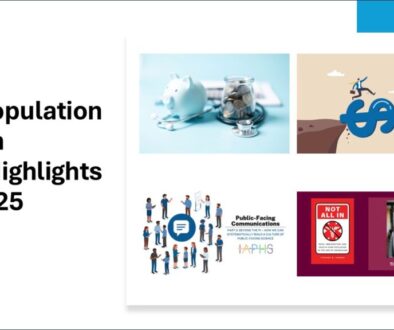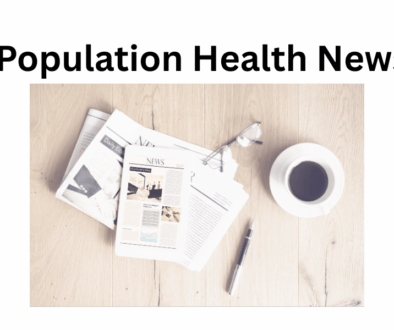Population Health News Round-Up: June 2024
JoAnne DyerIAPHS Members in the News

Shannon Monnat was elected to the American Sociological Association as a Council Member in the Section on the Sociology of Population. (June 3, 2024)
Emily Dore in Social Science & Medicine: In this scoping review of childhood exposure to social and economic policies, Dore and her co-author found health and other benefits from civil rights policies, New Deal programs, and safety-net programs. Some null and mixed results were also found. (July 2024)
Sandro Galea in Health Affairs Scholar: “There was substantial unmet need for mental health treatment in all insurance market segments, but especially among individuals without insurance.” (March 8, 2024)
Marino Bruce and Roland J. Thorpe Jr on caregiving and obesity in Black Americans, in Social Work Research: “Caregiving, being female, and chronic conditions were associated with higher odds of obesity, while physical activity was associated with lower odds of obesity.” (March 2024)
Anna-Michelle McSorley on discrimination and biological aging in Brain, Behavior, & Immunity – Health: “Reports of discrimination were more strongly associated with accelerated biological aging among White as compared with Black participants, although Black participants reported more discrimination overall and tended to exhibit older biological age and faster biological aging.” (May 9, 2024)
Health Equity and Disparities
People from LGBTQ+ communities experience higher rates of loneliness: “75% of sexual-minority adults feel at least moderately lonely.” They also have poorer health outcomes as a result. (Pittsburgh City Paper, May 29, 2024)
Hispanic health disparities go way back to the Inquisition and colonization: A “long history of health injustice in the Hispanic world” is linked to the health disparities many Hispanic communities experience today. The author cites uneven access to care and forced displacement as examples. (The Conversation, March 5, 2024)
Removing race adjustment from lung function tests: A simple measurement change could mean that “Black veterans could receive more than $1 billion in additional disability payments.” The adjustment dates to the slavery era. (STAT, May 19, 2024)
Environmental Health and Justice
Racial disparities found in utility cutoffs: In Minnesota, communities of color are more likely to have their electricity shut off due to a lack of bill payments. This association holds true “even when accounting for income, poverty level, and homeownership.” (Grist, June 11, 2024)
Sky-high levels of toxic gas found in parts of Louisiana: Johns Hopkins University environmental engineers found ethylene oxide “at levels a thousand times higher than what is considered safe.” Long-term exposure is linked to cancer. (Johns Hopkins University HUB, June 11, 2024)
Abandoned mines are problems waiting to happen: In Appalachia, “zombie mines” can contribute to landslides, water pollution, and economic harm. The call is growing for old mines to be identified and cleaned up. (Public News Service, June 17, 2024)
Built Environments, Spaces, and Places
Community violence linked to amygdala reactivity in adolescents: Over time, heightened amygdala responses can contribute to mental health issues. Nurturing parenting can mitigate this, however. (Public Health Post, May 17, 2024)
The built environment, Google Street View, and coronary heart disease: “In this cross-sectional study, the prevalence of CHD was associated with built environment factors derived from GSV through deep learning analysis, independent of census tract demographics.” (European Heart Disease, May 1, 2024)
Policy and Programs
Black-led grocery shop improves food access in Detroit: The Detroit People’s Co-Op sources healthy food and wellness products from farms and local vendors run by members of Black communities. (video from One Detroit, May 9, 2024)
Safety nets for kids help them even as adults: Children whose families received food stamps between 1962 and 1975 experienced increased economic self-sufficiency, better neighborhoods of residence, over a year of additional life expectancy, and more. (The Review of Economic Studies, May 2024)
Tribes use opioid settlement money toward culturally sensitive healing: To treat addiction, some tribes are investing funds in traditional healing, such as sweat lodges, to connect members to their culture. (KFF Health News, May 15, 2024)










All comments will be reviewed and posted if substantive and of general interest to IAPHS readers.